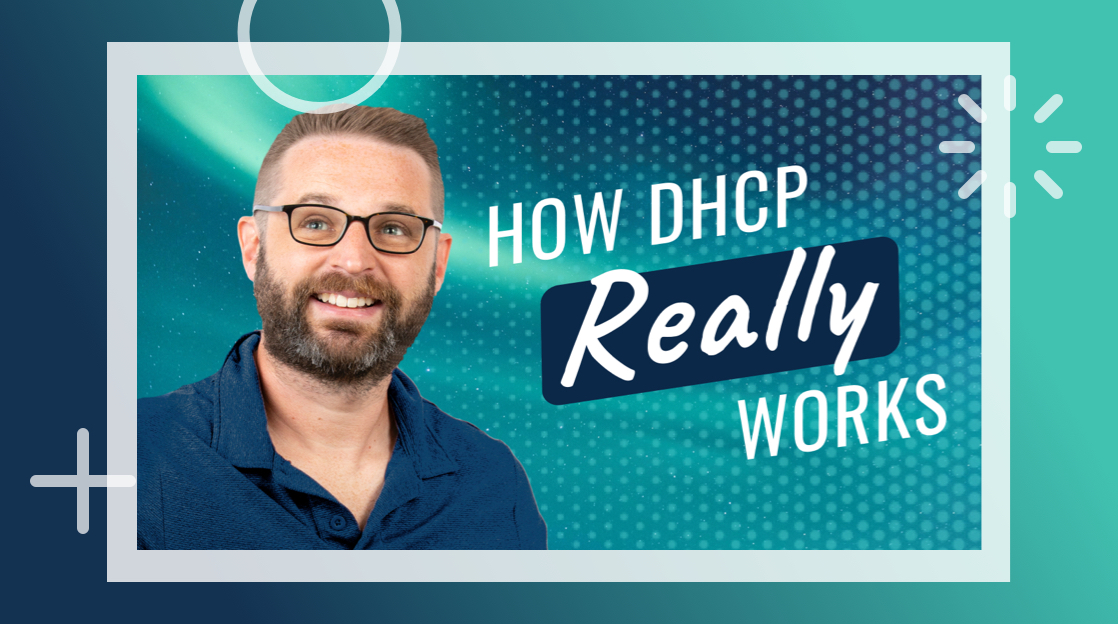How does DHCP work in an Enterprise?

System administrators and network engineers have a tough job. They need to keep track of hundreds of devices in the enterprise environment. But how? I can’t even remember what I had for dinner last night, much less the IP address for the CEO’s laptop. They use black magic called DHCP.
In this article, we will explain what DHCP is and how DHCP works in the enterprise. If you want a complete server administration tutorial, look at Knox Hutchinson’s CBT Nuggets class instead.
An Overview of DHCP in the Enterprise
In this video, CBT Nuggets trainer Knox Hutchinson explores the ins and outs of Dynamic Host Configuration Protocol (DHCP) and its role in managing IP addresses in an enterprise network.
What is DHCP?
DHCP stands for dynamic host control protocol. It’s a system designed to automatically track and distribute IP addresses for devices on a network.
How Does DHCP Work in an Enterprise?
DHCP doesn’t work much differently in the enterprise compared to a typical consumer home router. However, the biggest difference is that DHCP servers in the enterprise are typically installed as an independent service — and those DHCP servers can include more options. Here’s how it works.
When a device attaches itself to a network, it sends a broadcast out to the network. The network switch retransmits that broadcast to all other devices on the network. If a DHCP server is attached to the network, it’ll hear that broadcast.
After the DHCP server receives the broadcasted request from the device asking for an IP address, it sends an offer for an IP address to the device. It’s important to note that the IP address isn’t assigned to the device yet. So, the DHCP server is basically sending a message back to the device saying, “Yo, I have this IP. You want it?”
If the IP offer is acceptable to the device, that device sends a response back to the DHCP server accepting the IP. Once the DHCP server receives the message stating that the machine wants that IP, the DHCP server sends a request back to the device. That request includes the IP address along with any additional configuration options.
Finally, the device returns an acknowledgment to the DHCP server stating it received the request and is now using the IP.
How to Configure a DHCP Server.
DHCP servers use a pool of IP addresses assigned to them to distribute to devices. DHCP servers can’t assign whatever IP address they want. If it did, the DHCP server might accidentally create packet collisions. Likewise, due to the laws of math, the DHCP server needs to assign IP addresses that are compatible with each other.
Let’s look at our home routers as an example. Consumer routers assign IP addresses in the private IP space. These are typically 192.168.0.x addresses on a 0/24 subnet.
The 0/24 subnet stipulates that all 255 IP addresses in the 192.168.0.x range can communicate with each other. A device with a 192.168.1.x IP can’t communicate with a device assigned a 192.168.0.x IP without a router in between them. Why? Because of math.
When a home router assigns an IP address to one of our devices, it typically also includes things like gateway and DNS addresses. Both are important in network communication. The gateway is the bridge to the outside world (Eg. the internet), and DNS is the phone book for our computers and smartphones. Without either, our laptops couldn’t communicate with the internet since it is a different network, and they wouldn’t understand what ‘Google.com’ means.
DHCP servers often send data such as the gateway and DNS addresses to devices asking for an IP, too. Think of the DHCP server as an ‘automated network configuration tool.’ DHCP servers in the enterprise also support PXE environments for configuring and managing a fleet of devices, too.
Start Honing Your Server Admin Skills Now
Today, we explained how DHCP servers work in the enterprise, but DHCP servers and server administration are much more complicated. We never did explain that mysterious IP mat
We also introduced new things like PXE environments. Unfortunately, we’ve run out of word space, however. But we have a solution for you.
Go watch Knox Huthinson’s server administration fundamentals online course at CBT Nuggets. Knox is an industry veteran that explains all the intricacies of DHCP servers, fleet management, and much more. If you want to break into the world of IT, you need to start training right now.
delivered to your inbox.
By submitting this form you agree to receive marketing emails from CBT Nuggets and that you have read, understood and are able to consent to our privacy policy.